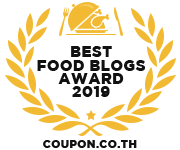Curry Pastes
Indian curry pastes
Rogan josh paste is a medium-hot blend that is a specialty of Kashmir in northern
Korma curry paste, a mix of mostly heat-free spices, forms the base of a mild, almost nutty, slow-cooked curry. Korma curries can vary widely but often include chicken or vegetables cooked with yoghurt.
Biryani curry paste is a mild blend that powers the classic Indian rice dish after which it's named, where aromatic basmati rice is topped with vegetables or chicken and dried fruit or nuts.
Vindaloo curry paste fires the famous stewed vinegar curry introduced by the Portuguese to
Balti is both a paste (characterised by tomatoes, coriander and chilli) and a style of cooking. Tenderised meat (usually lamb) is stir-fried with balti paste in a wok-style pan and served with naan bread. Balti ranges from mild to medium-hot.
Tandoori curry paste is a mild blend of paprika, lemon juice, garlic, onion and various spices blended with yoghurt and used as a marinade. Marinated meat is grilled in a tandoor (Indian clay oven) or over coals.
Butter chicken curry paste is a mild, quickfix base for the popular creamy poultry dish.
Tikka masala curry paste produces an aromatic, slightly smokey, rich curry based on tomatoes and cream or coconut cream. It's a mild paste, most commonly used with chicken.
Thai curry pastes are classified by colour, but all feature common flavours such as galangal, prawn paste and lemongrass.
Thai red curry paste is the most common, and spiciest. Along with the similarly spicy
Thai green curry paste has virtually identical ingredients and uses to red curry paste except that fresh green chillies are used instead of dried red chilli powder. It is also milder and teams well with chicken or fish.
Thai yellow curry paste is the mildest of the Thai pastes and gets its intense colour from yellow peppers and turmeric. It's great with seafood, noodles and beef, but also makes a fabulous soup.
Massaman curry paste marries Indian and Thai curry flavours in a spicy, aromatic mix that goes brilliantly with beef. A massaman curry always contains coconut milk and usually roasted peanuts, tamarind and bay leaves, and is served over rice.
Laksa curry paste is the foundation flavour of the classic Malaysian soup-based curry. Generally mild to medium in heat, laksa curry always contains coconut milk and rice stick noodles, and goes best with seafood, tofu or vegetables and chicken.















Brilliant posting!!!!
ReplyDeleteGood food!!!!
Thank you.
GAWD I LOVE BUtter ChiCken! nyumsss!!
ReplyDeleteLittle india in Singapore has some nice butter chicken too~~
ReplyDeleteWhen you come Brunei, I bring you to eat Pakistani food.. very nice that place~
yay! fo sure :D
ReplyDelete